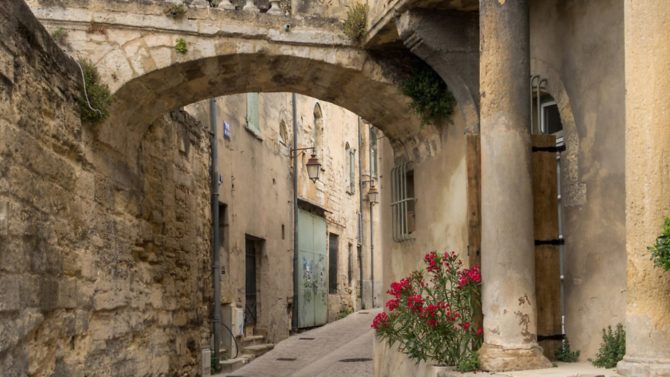7 things you need to know before buying a listed property in France

Buying a listed house or a home in a heritage site is a dream for many British expats, but it comes with responsibilities. Here are a few things to know before buying a protected building in France

1. There are regulations for unlisted buildings
Did you know that in France, even if a village is not listed or located in an important heritage site, your property is subject to regulations regarding its exterior? These are defined in the Plan Local d’Urbanisme (PLU) which you should consult before undertaking any construction or renovation work. Available to view at your local mairie, the PLU sets out in detail the general planning considerations within a town or village and also ensures that the overall aspect of the commune is harmonious.
2. What makes a building listed?
Sometimes a house is of interest because of a single element inside, such as a period fireplace. A building can be classé Monument Historique (MH) and is therefore a monument of national importance such as the Cathédrale Notre-Dame-de-Strasbourg or Versailles Palace. Other buildings, sometimes small châteaux or manoirs, can be inscrits sur l’Inventaire Supplémentaire des Monuments Historiques (ISMH), which means they are of regional or local importance. Properties within 500m of a listed monument such as an old church, a cemetery or a dolmen are also subject to construction regulations to preserve the heritage of the site. The protected area is known as a périmètre protégé. Bear in mind that properties that are simply within sight of a listed monument are also concerned by regulations.
_______________________________________________________________________________
Don’t miss
Living in a Plus Beaux Village
_______________________________________________________________________________

3. How do I know whether I am concerned by a heritage listing?
To find out whether your property is located in a périmètre protégé, you can ask the mairie or head to the website of your regional Direction Régionale des Affaires Culturelles (DRAC) – part of the Ministry of Culture.
4. What are my responsibilities as an owner?
As the owner of a listed property, you have a duty to preserve the heritage of the building and are thus responsible for its upkeep and restoration. This can be expensive since you might only be able to use certain materials and any construction will have to conform with requirements set by the Architectes de Bâtiments de France, a body of state planning officials who act as the guardians of France’s architectural heritage
_______________________________________________________________________________
Don’t miss
How to discover the history of your French property
You could buy a stunning French château for less than you think
_______________________________________________________________________________

5. What do I do if I want to do work on a protected building?
Prior to starting anything, you will need to inform the DRAC and the préfet to ask for permission. They will start a process of consultation with the Architectes des Bâtiments de France. The regional préfet has six months to refuse or grant permission but if the ministry decides to weigh in, the delay can be extended to 12 months. You will need to hire the services of an architect, preferably an architecte du patrimoine, who will supervise the work throughout, and a registered builder of your choice. Building specialist Arthur Cutler explains: “Prior to undertaking any works on a listed building, it is essential to obtain authorisation through one form of planning application or another. As a rule, this will be a demande de permis de construire, even where under normal circumstances, a simpler déclaration préalable would suffice. Although the precise requirements will vary from property to property, it is best to remember that any change to the external appearance of a listed building cannot be undertaken without permission.”
6. Can I get any financial support?
Grants are available to help with restoration or ongoing maintenance works for listed houses or properties located in heritage sites. These subventions can come from the state or from regional levels. You can also claim back expenses and receive tax rebates. Certain renovation costs are 100% deductible against tax, as well as the costs of opening to the public. Other costs, such as caretaking or works not eligible for grants, are also 100% deductible if the building is open to the public for visits or as a holiday accommodation. Each case is different though, so you should seek advice for your specific case either at the DRAC or with separate organisations.
_______________________________________________________________________________
Don’t miss
Renovating a property in France on a budget
I wish I’d known that before buying my French property
_______________________________________________________________________________
7. Is it a good idea to set up a holiday business?
These protected sites will attract many visitors keen to discover France’s architectural heritage so settling in an interesting heritage site such as a Plus Beau Village or in a UNESCO site is a good move if you are thinking of setting up a holiday rental business or a B&B. “These heritage sites are ideal for setting up high-end, luxury B&Bs,” says Johanna Jaggs, an estate agent at Beaux Villages, “You’ll find that rooms at around €200 a night is standard in locations such as St-Emilion.” While properties might be at a premium because of the attractive location, by setting up a B&B you can expect a good return on investment because of the high demand for tourist accommodation.
Share to: Facebook Twitter LinkedIn Email


